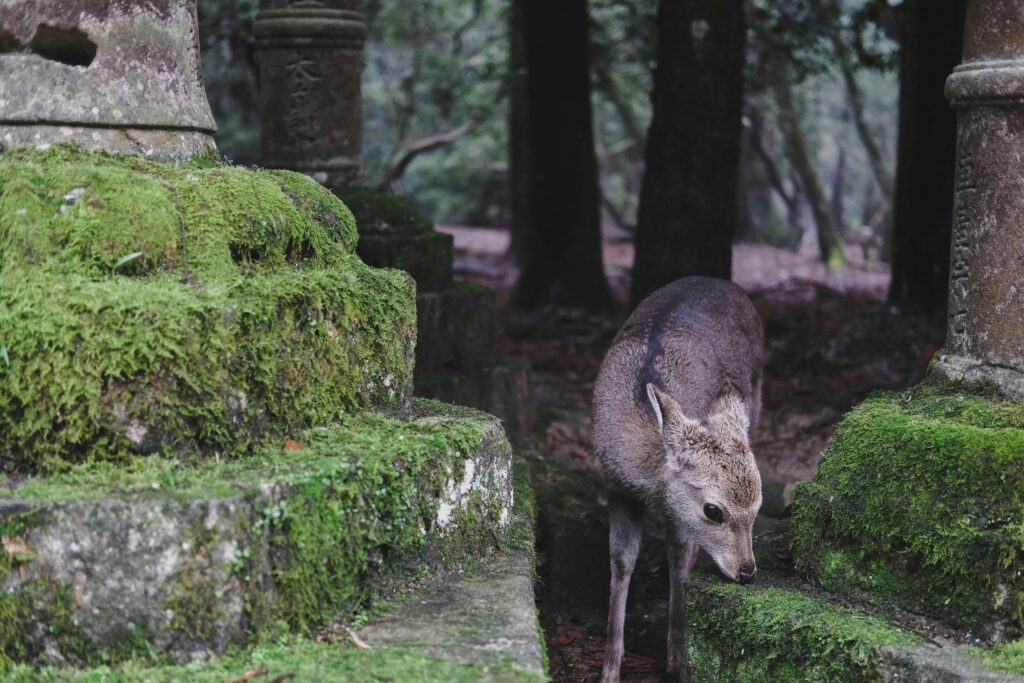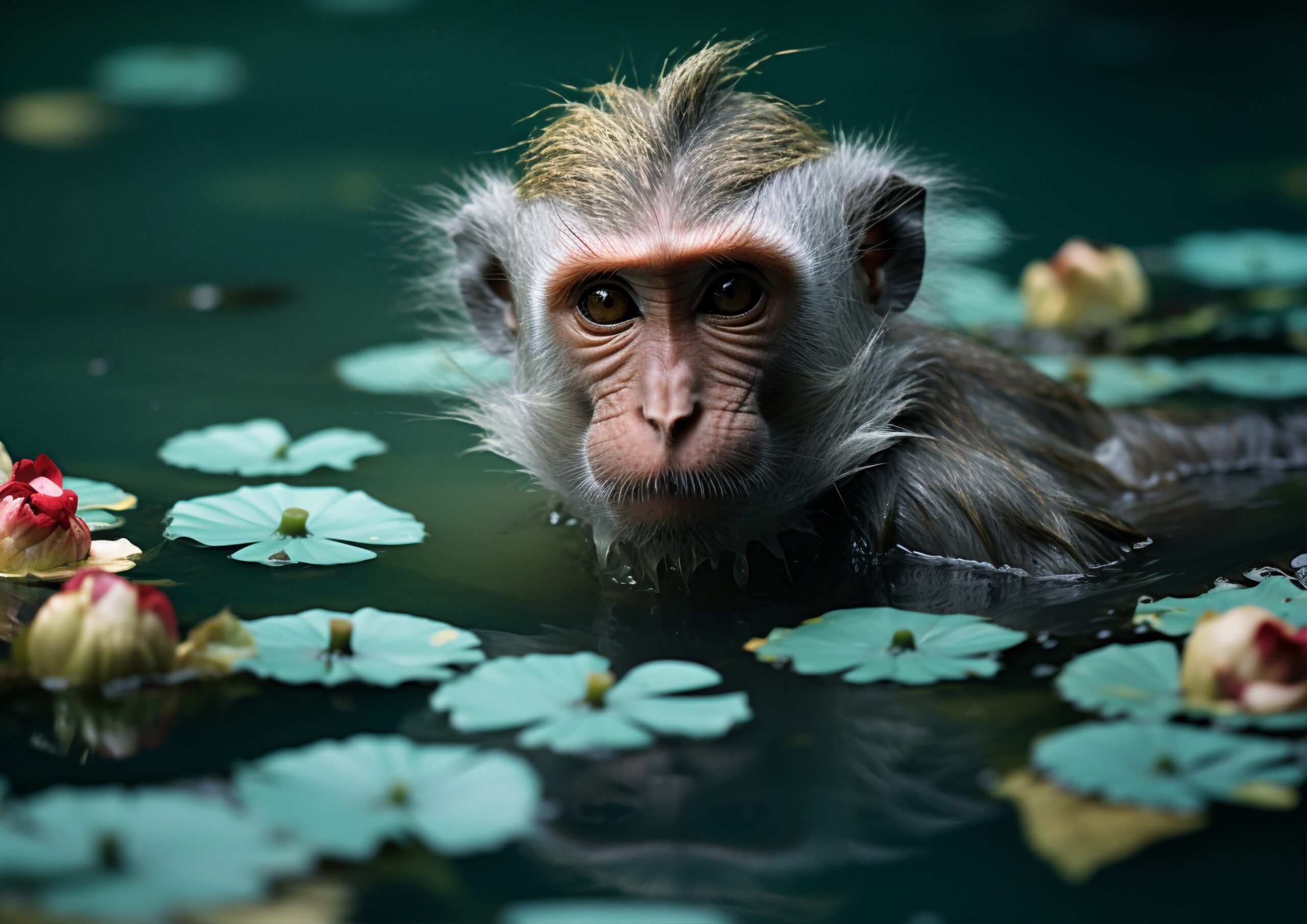Embarking on the captivating journey of “Exploring Japan’s Unique Wildlife: A Guide to Rare Species” unveils a realm where nature’s wonders intertwine with cultural significance. Japan’s diverse landscapes harbor a fascinating array of rare and enchanting creatures, each contributing to the intricate tapestry of the country’s exclusive animal kingdom.
From mischievous tanuki, revered as symbols of good fortune in Japanese folklore, to the majestic sika deer gracefully wandering through serene forests, the mammalian wonders of Japan captivate both the imagination and the heart. The rugged cliffs become the stage for the agile Japanese serow, navigating their habitats with unparalleled agility, revealing the resilience of these unique goat antelopes.
Venturing into aquatic realms, the cool waters reveal the ancient Japanese giant salamander—a living fossil with a history dating back millions of years. Meanwhile, the lush Okinawan forests host the venomous yet beautiful Okinawa green tree viper, showcasing the delicate balance of nature. The avian wonders take flight with the red-crowned crane, symbolizing longevity and good fortune in Japanese culture, and the Japanese paradise flycatcher, an airborne spectacle of vibrant plumage and migratory patterns.
Diving into the ocean depths unravels the mysteries of the colossal Japanese spider crab, a giant of the ocean floor, and the swift dall’s porpoise, racing through Japanese seas with playful abandon. As this exploration unfolds, the blog post delves into the critical importance of conservation efforts, shedding light on initiatives dedicated to protecting Japan’s rare and endangered species.
It emphasizes the delicate balance necessary to preserve the country’s unique ecosystems and encourages readers to appreciate and respect the significance of wildlife conservation. In conclusion, “Exploring Japan’s Unique Wildlife” serves as a gateway to a world where nature’s marvels intertwine with cultural heritage, inviting readers to appreciate the rare and remarkable creatures that call Japan home.
Animals you can only Find in Japan
Japan, nestled between the Pacific Ocean and the Sea of Japan, boasts a unique tapestry of wildlife that captivates the imagination of nature enthusiasts. From the mischievous tanuki, revered as a symbol of good fortune in Japanese folklore, to the majestic red-crowned crane, an embodiment of longevity and luck, the animals found in Japan are not only rare but also deeply entwined with the country’s culture and mythology.
Roaming the serene forests are sika deer, their graceful presence echoing through Japanese mythology, while cliff-dwelling Japanese serows navigate rugged landscapes with unparalleled agility, carving their niche as distinctive goat antelopes. Delving into aquatic realms reveals the Japanese giant salamander, a living fossil with a history spanning millions of years, and the venomous yet beautiful Okinawa green tree viper, thriving in the lush landscapes of Okinawa.
Taking to the skies, the Japanese paradise flycatcher graces the air with its elegant flight, and the red-crowned crane’s dance becomes a symbol of natural grace and beauty. Beneath the ocean waves, the colossal Japanese spider crab and the swift dall’s porpoise showcase the wonders of marine life exclusive to Japanese waters.
However, the conservation efforts outlined in this narrative remind us that the existence of these unique creatures hangs in a delicate balance, urging us to appreciate, protect, and respect the irreplaceable biodiversity that defines Japan’s unparalleled natural heritage.
In the face of rapid urbanization and environmental challenges, Japan has taken significant strides in preserving its extraordinary biodiversity. Conservation initiatives aim not only to safeguard these rare species but also to educate and involve communities in the crucial task of maintaining ecological harmony.
The commitment to protecting Japan’s wildlife is evident in the efforts dedicated to ensuring the red-crowned crane’s habitats remain undisturbed, allowing these iconic birds to thrive. Similarly, initiatives focus on the Japanese giant salamander, a living relic that faces threats from habitat loss and pollution, underscoring the need for concerted action.

The collaborative efforts extend to marine ecosystems, where conservationists strive to shield the Japanese spider crab and dall’s porpoise from the impacts of climate change and overfishing. The delicate balance of these underwater ecosystems is crucial not only for these fascinating creatures but also for the sustainability of Japanese fisheries and the broader marine environment.
As we celebrate the wonder of Japan’s exclusive wildlife, it becomes clear that the responsibility to protect these animals rests not only with conservation organizations but with each individual. Whether through responsible tourism practices, supporting conservation programs, or adopting eco-friendly habits, everyone has a role to play in ensuring that the unique animals found in Japan continue to enchant and inspire generations to come. The journey into Japan’s wildlife is not just a discovery of rare species; it’s a call to action for the preservation of the country’s natural treasures.
Table of Contents About Animals you can only Find in Japan
Uncommon Japanese Mammals
Unveiling the enchanting world of uncommon Japanese mammals provides a captivating glimpse into the rich biodiversity of Japan’s landscapes. Among these extraordinary creatures, the tanuki, or Japanese raccoon dog, stands out as a symbol of good fortune deeply ingrained in Japanese folklore. Renowned for their mischievous antics, tanuki are charismatic mammals that bring a touch of magic to the country’s wooded areas.
Venturing into Japan’s serene forests also reveals the majestic presence of sika deer, graceful inhabitants that hold cultural significance in Japanese mythology. These deer navigate the woodlands with elegance, contributing to the tranquil beauty of their surroundings. Meanwhile, the Japanese serow, a cliff-dwelling goat antelope, adds an adventurous dimension to the exploration. With unparalleled agility, serows navigate rugged cliffs, embodying the resilience of Japan’s untamed wilderness.
As we delve into the realm of uncommon Japanese mammals, each species not only showcases unique ecological adaptations but also contributes to the cultural tapestry of the nation, making the journey into Japan’s wildlife a truly enriching experience.
Rare Reptiles in Japan
In the realm of Japan’s rich biodiversity, the category of rare reptiles stands out as a fascinating and often overlooked aspect of the country’s wildlife tapestry. One iconic representative is the Japanese Giant Salamander, a living relic that has gracefully navigated the cool waters of Japan for millions of years. With its unique appearance and ancient lineage, the giant salamander captures the imagination of those who venture into its habitat. The exploration doesn’t end there, as the Okinawa Green Tree Viper adds a touch of mystery to Japan’s lush landscapes.
This venomous beauty, thriving in the forests of Okinawa, showcases the delicate balance of nature with its vibrant green scales. As we delve into the intricate ecosystems that these reptiles inhabit, we not only uncover the secrets of their survival but also gain a deeper appreciation for the role they play in maintaining the ecological equilibrium of Japan. Whether gliding through the waters or slithering through the foliage, these rare reptiles contribute to the biological diversity that makes Japan’s wildlife truly exceptional.
Endangered Birds in Japanese Wilderness
In the enchanting wilderness of Japan, a silent struggle unfolds to preserve the delicate existence of endangered birds, each with a unique story etched into the fabric of the country’s biodiversity. One such protagonist in this narrative is the Red-Crowned Crane, a majestic creature synonymous with good fortune and longevity in Japanese culture.
These elegant birds, with their striking red crowns and intricate courtship dances, grace the wetlands and marshes, captivating the hearts of all who witness their aerial performances. However, the encroachment of human activities and habitat degradation pose significant threats to their survival.
The Red-Crowned Crane, also known as the “Tancho” in Japan, faces challenges ranging from loss of nesting grounds to disruptions in migration patterns. Conservation efforts, though, have been steadfast in protecting these symbols of Japanese heritage. Dedicated initiatives focus on habitat restoration, captive breeding programs, and community education to raise awareness about the importance of preserving these avian wonders.
By delving into the plight of endangered birds in the Japanese wilderness, we gain insight into the interconnectedness of ecosystems and the collective responsibility to ensure the continued existence of these feathered ambassadors of Japan’s natural beauty.
Japan’s Exclusive Amphibians
Japan’s Exclusive Amphibians offer a fascinating glimpse into the country’s rich biodiversity. Among them, the Japanese Giant Salamander stands out as a living fossil, tracing its lineage back millions of years. Found in pristine waters, this giant amphibian embodies resilience and endurance. Dive into the cool, crystal-clear streams of Japan to witness the awe-inspiring presence of this remarkable creature, marveling at its distinct features and understanding the crucial role it plays in maintaining the ecological balance of its habitat.
On the subtropical islands of Okinawa, another unique amphibian takes center stage—the Okinawa Green Tree Viper. Despite its venomous nature, this strikingly beautiful viper plays a vital role in controlling local rodent populations, contributing to the delicate equilibrium of its lush forest surroundings. Explore the vibrant Okinawan landscapes as we delve into the life of this venomous beauty, understanding the intricate relationships it forms within its ecosystem.
These exclusive amphibians not only showcase the diversity of Japan’s landscapes but also underscore the importance of conservation efforts. As we uncover the mysteries of these unique creatures, we gain a deeper appreciation for the delicate ecosystems they inhabit and the challenges they face. Join us on a journey through the wetlands and forests of Japan, where amphibians thrive and contribute to the tapestry of life in this enchanting island nation.
Indigenous Marine Life in Japanese Waters
Indigenous marine life in Japanese waters represents a captivating realm of diversity, with species that have adapted to the unique conditions of the surrounding seas. Among these marvels is the Japanese Spider Crab, a creature of colossal proportions that commands attention on the ocean floor. Its intricately designed carapace and spindly limbs evoke both fascination and awe.
Moving through the depths with grace and mystery, the Dall’s Porpoise adds a dynamic element to Japan’s maritime landscape. These swift swimmers, characterized by their distinct black and white markings, captivate observers as they playfully navigate the ocean currents. The underwater tapestry is further enriched by an array of vibrant marine life, each contributing to the delicate balance of Japan’s coastal ecosystems.
As we delve into the mysteries of indigenous marine species, it becomes evident that their conservation is paramount. Their survival is not just integral to the ecological equilibrium but also to the cultural fabric of Japan, where respect for nature is deeply ingrained. Explore with us as we dive into the depths, uncovering the wonders of indigenous marine life that define Japan’s coastal waters.
FAQs About Animals you can only Find in Japan
- Why are Japanese macaques called snow monkeys?
- Japanese macaques earned the nickname “snow monkeys” due to their ability to endure cold climates and their snowy habitats.
- How does Nara manage its overpopulation of sika deer?
- Nara implements a unique approach by allowing tourists to feed the deer specially made crackers, creating a sustainable solution to control the deer population.
- Why is the axolotl considered a living fossil?
- The axolotl is deemed a living fossil because it retains its aquatic larval form throughout its entire life, a trait lost in most other amphibians during metamorphosis.
- What makes the Japanese giant hornet unique?
- The Japanese giant hornet is the world’s largest hornet, known for its size, aggressiveness, and distinct appearance.
- How can individuals contribute to the conservation of these unique animals?
- Individuals can contribute by supporting conservation organizations, respecting wildlife habitats, and staying informed about the challenges these species face.
Thank you, if you liked this information of mine then do give feedback. Your feedback will motivate me further so that I can give you more information.




